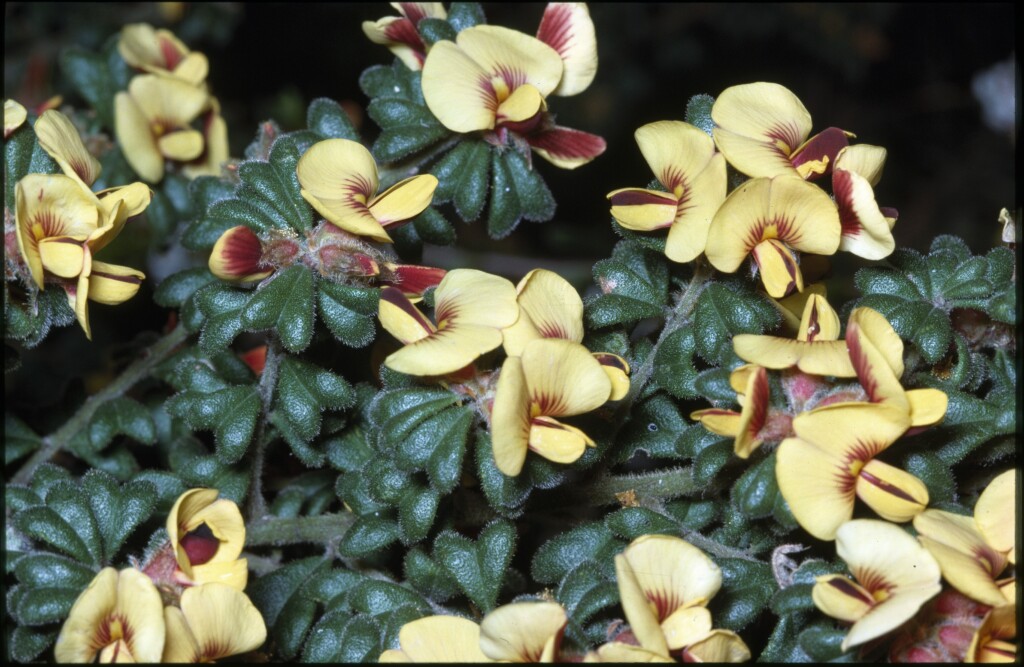Pultenaea scabra
R.Br. Rough Bush-peaErect or spreading shrub to 3 m high; stems terete, densely hairy with a mixture of short and long hairs. Leaves alternate, obcordate, 3–16 mm long, 2–13 mm wide; midrib terminating in a short, usually recurved mucro; upper surface scabrous, usually with scattered, tubercle-based hairs; lower surface hairy, paler than upper; midrib raised, densely hairy; margin recurved; stipules triangular to lanceolate, 1–2 mm long with slightly recurved tips. Inflorescence a head-like cluster of more than 3 flowers; bracts orbicular, 1–3 mm long, hairy on back, apex split or apparently 3-lobed with narrow central lobe, deciduous before anthesis; calyx 5–6 mm long, densely hairy; bracteoles attached at or below centre of calyx tube, linear to lanceolate, 2–3 mm long, densely hairy; standard 7–12 mm wide; ovary and most of style hairy. Pod ovate, hairy, lower half enclosed by calyx. Flowers Sep.–Nov.
Wim, GleP, VVP, GipP, OtP, Gold, CVU, GGr, DunT, EGL, EGU, WPro, HSF, HNF, OtR, Strz, HFE, VAlp. Also SA, Qld, NSW. Widely distributed across the State, mainly south and east of the Great Dividing Range, usually occurring in moist forest, occasionally in dry forest and heath.
The leaves of Pultenaea scabra are highly variable in shape and size but the scabrous, usually hairy upper surface is distinctive; any subspecific classification at present appears unworkable, accordingly Bentham's varieties, cited by Willis (1973), are placed in synonymy following Thompson (1961). Presumed hybrids with P. benthamii have been recorded in the Grampians.
Corrick, M.G. (1996). Pultenaea. In: Walsh, N.G.; Entwisle, T.J., Flora of Victoria Vol. 3, Dicotyledons Winteraceae to Myrtaceae, pp. 765–793. Inkata Press, Melbourne.
 Spinning
SpinningThompson, J. (1961). Pultenaea. Contributions from the New South Wales Herbarium, Flora Series 101(1): 46–79.


